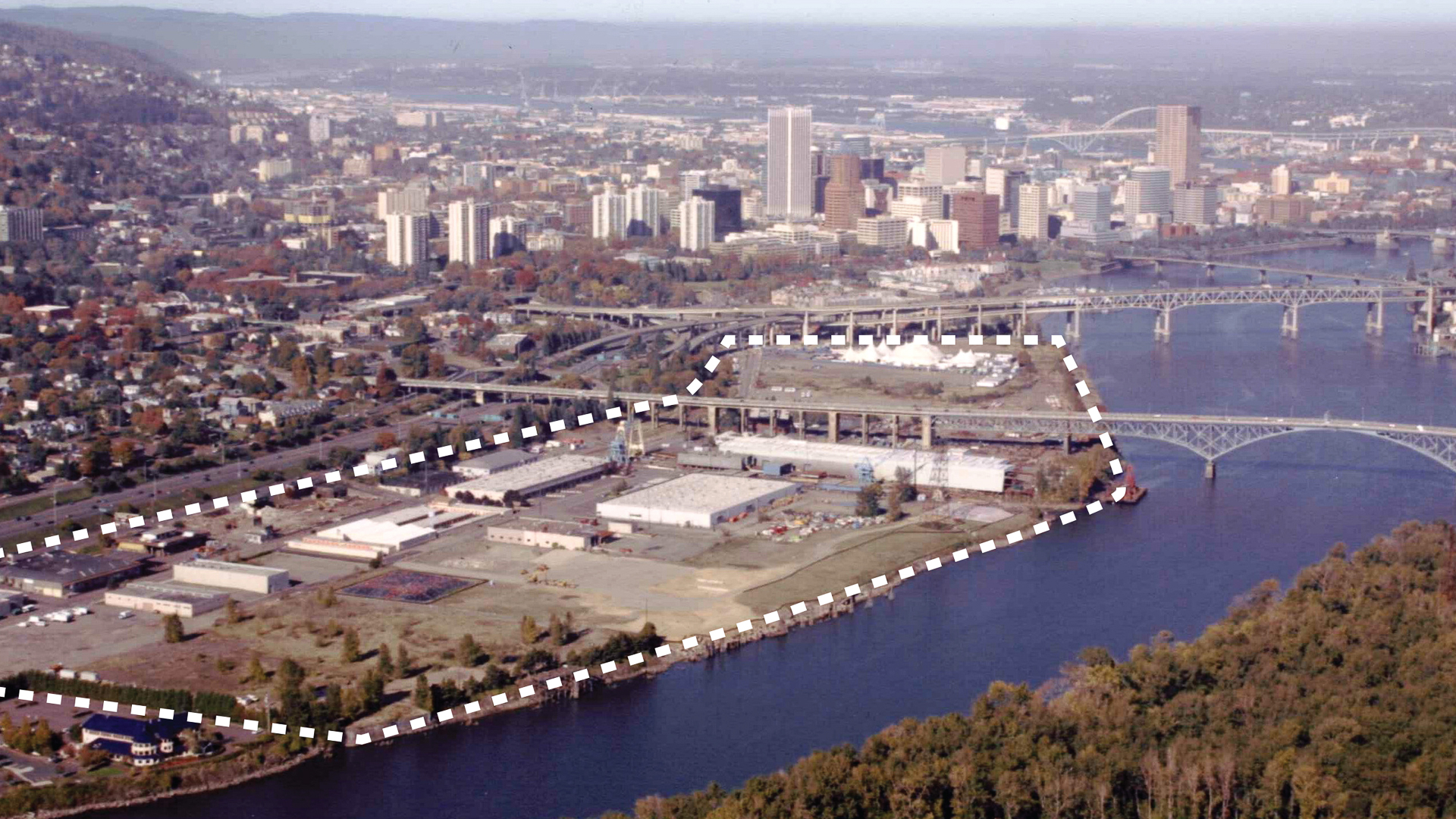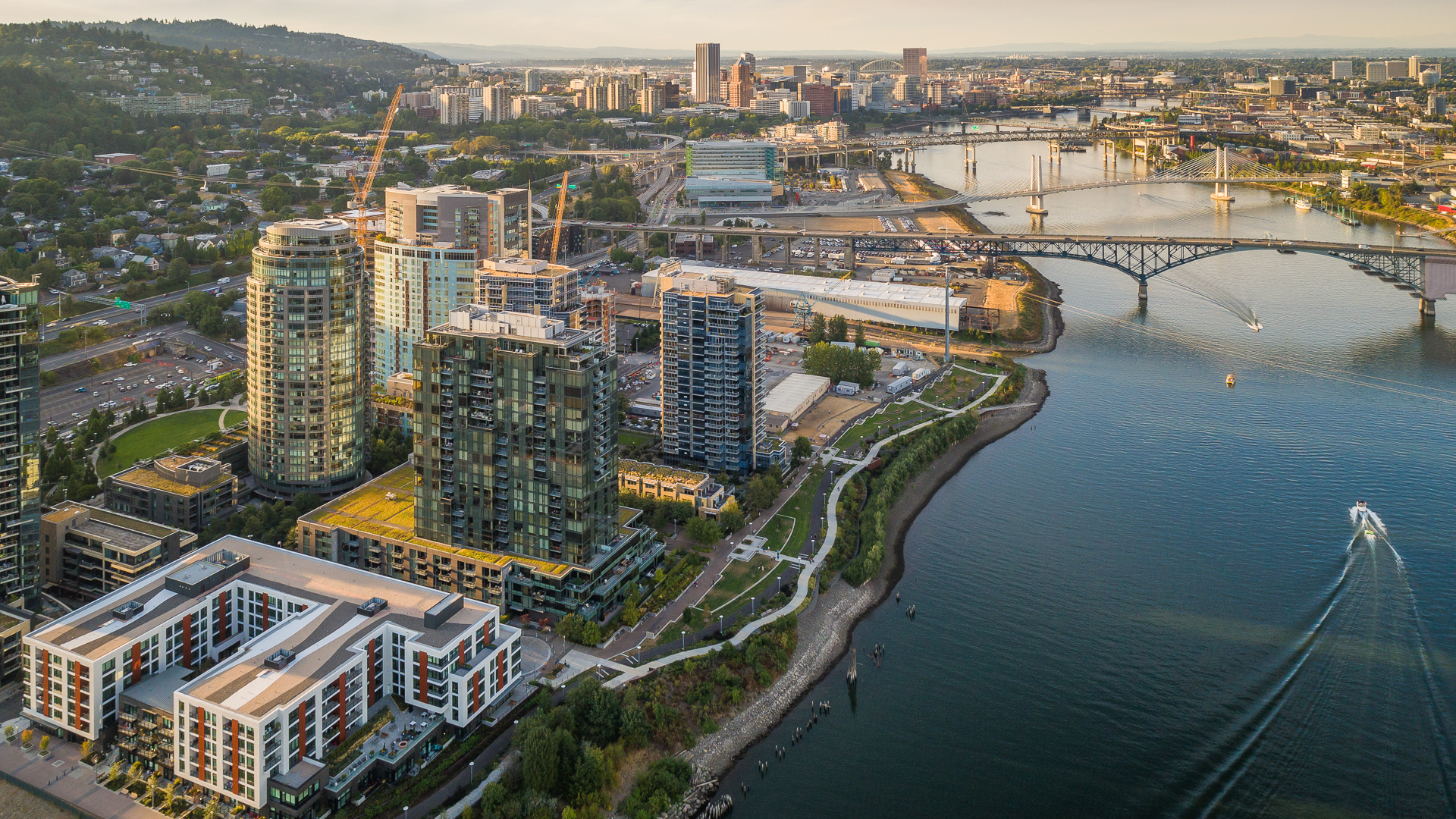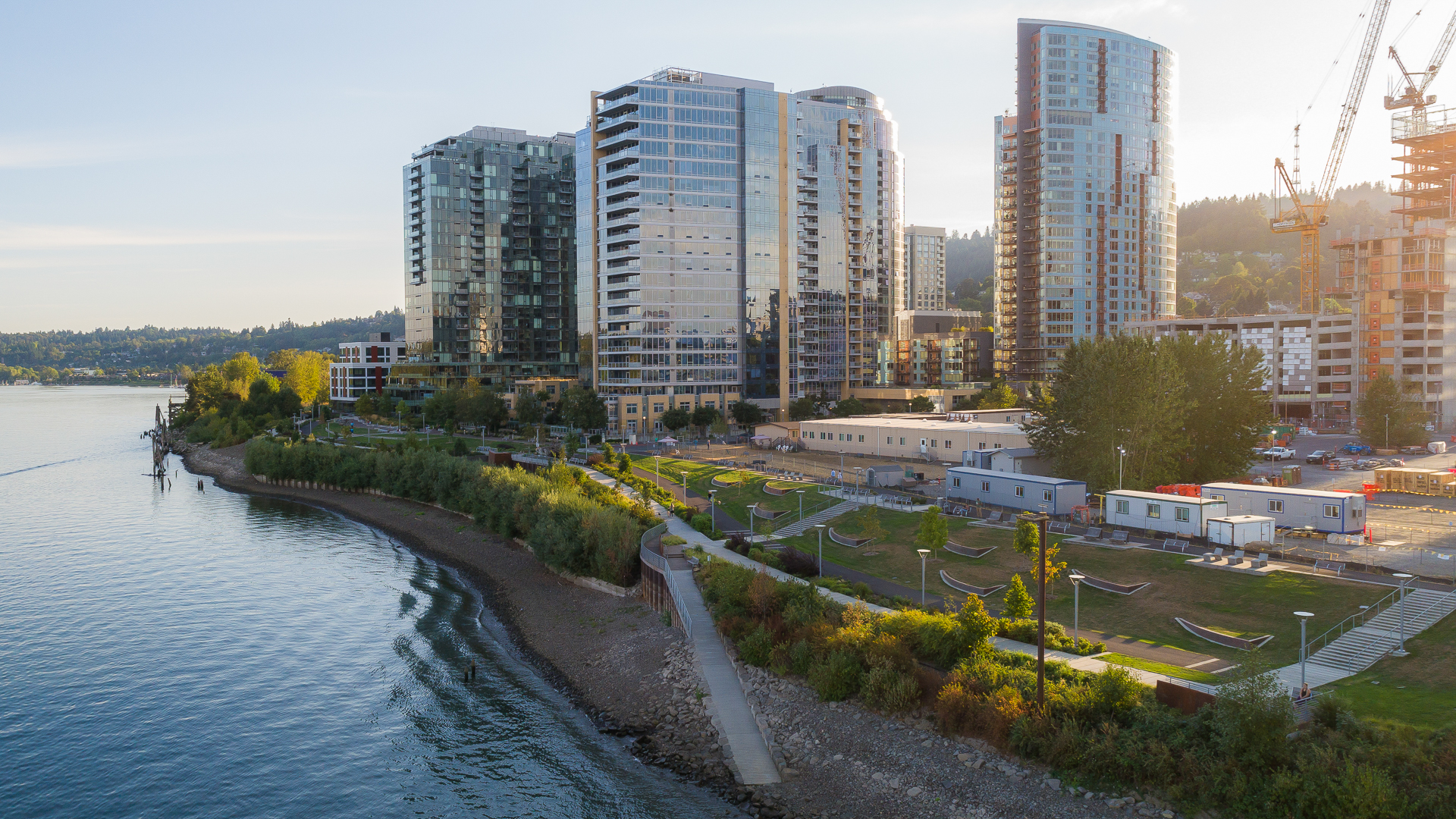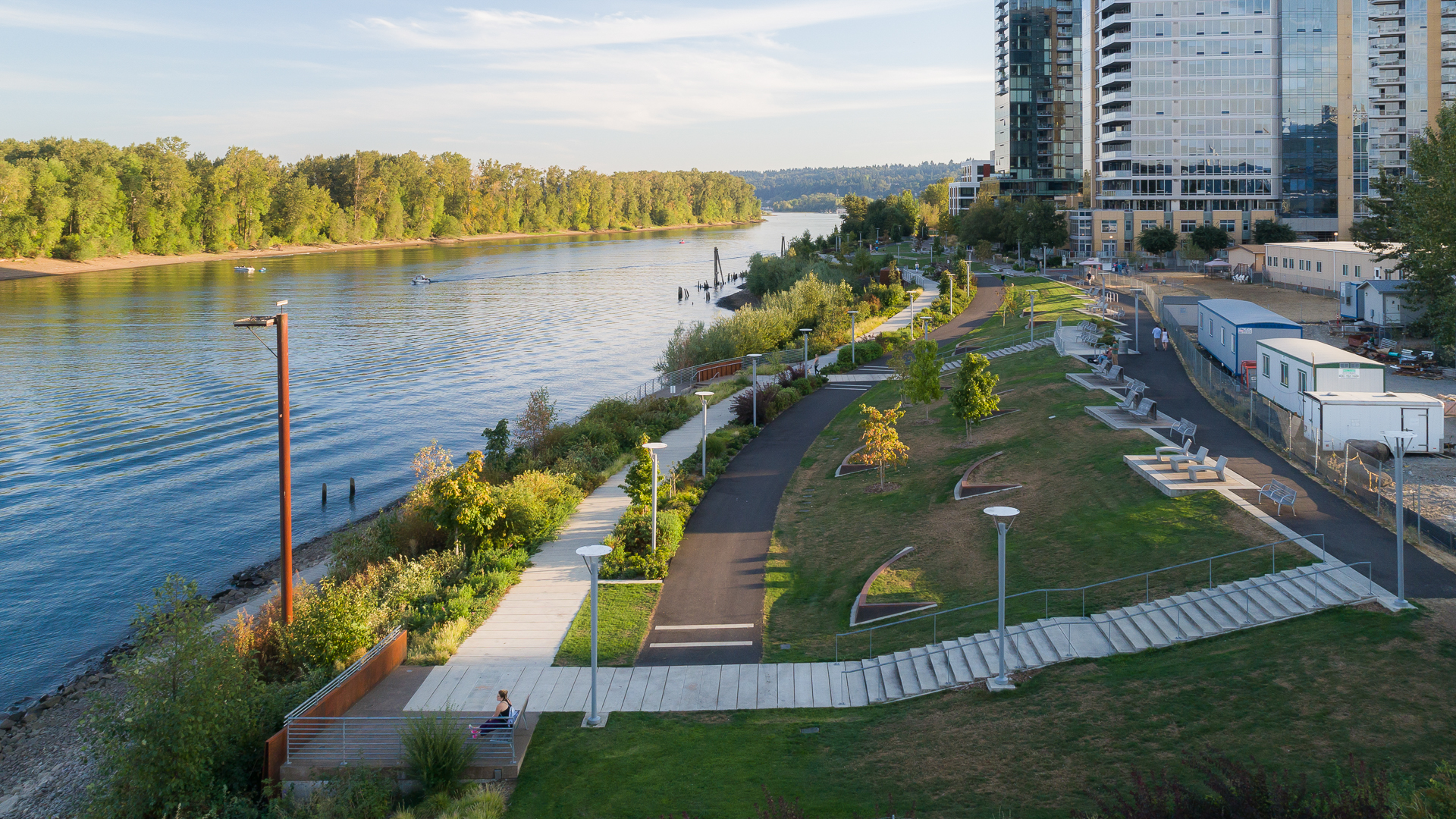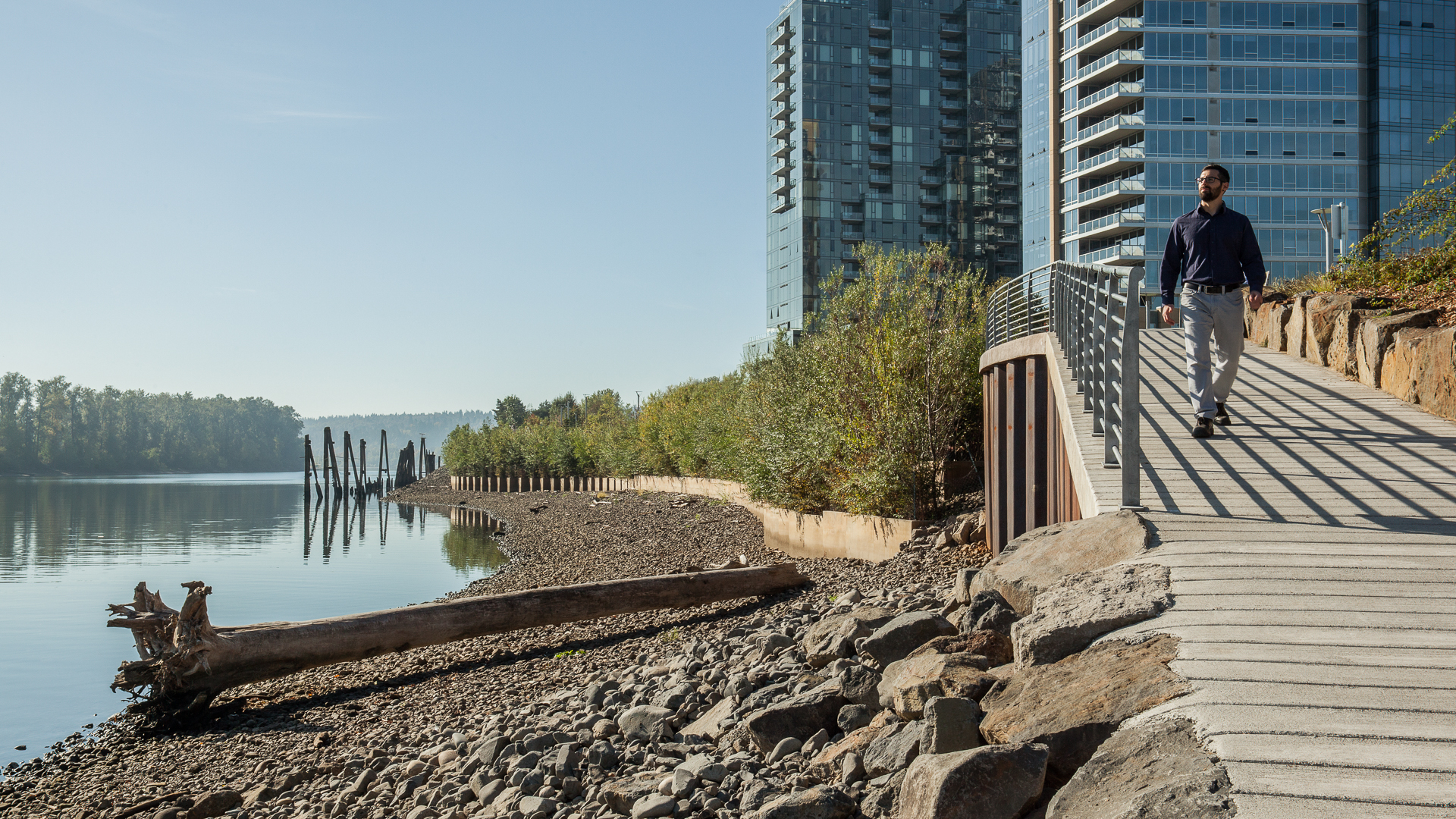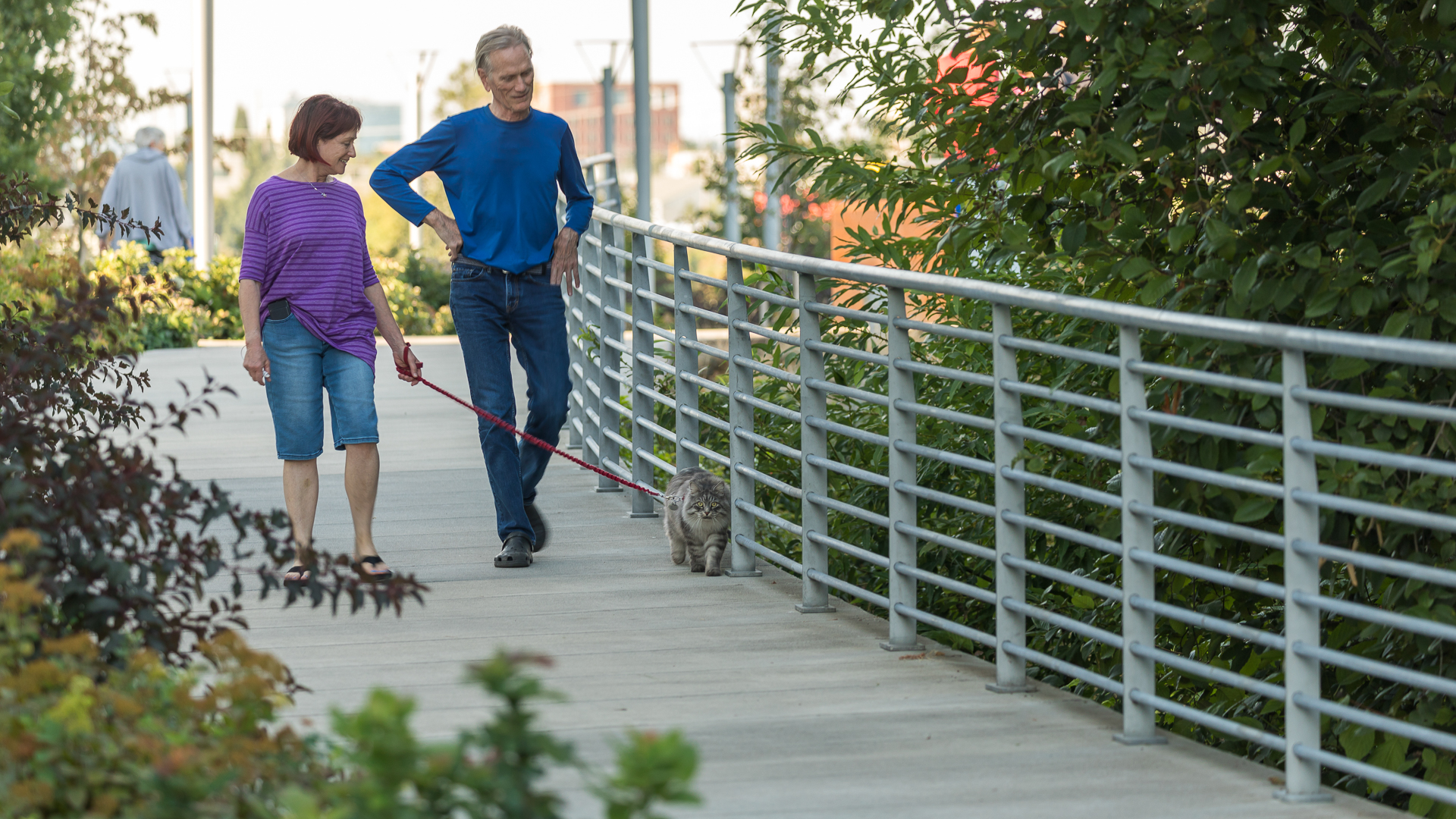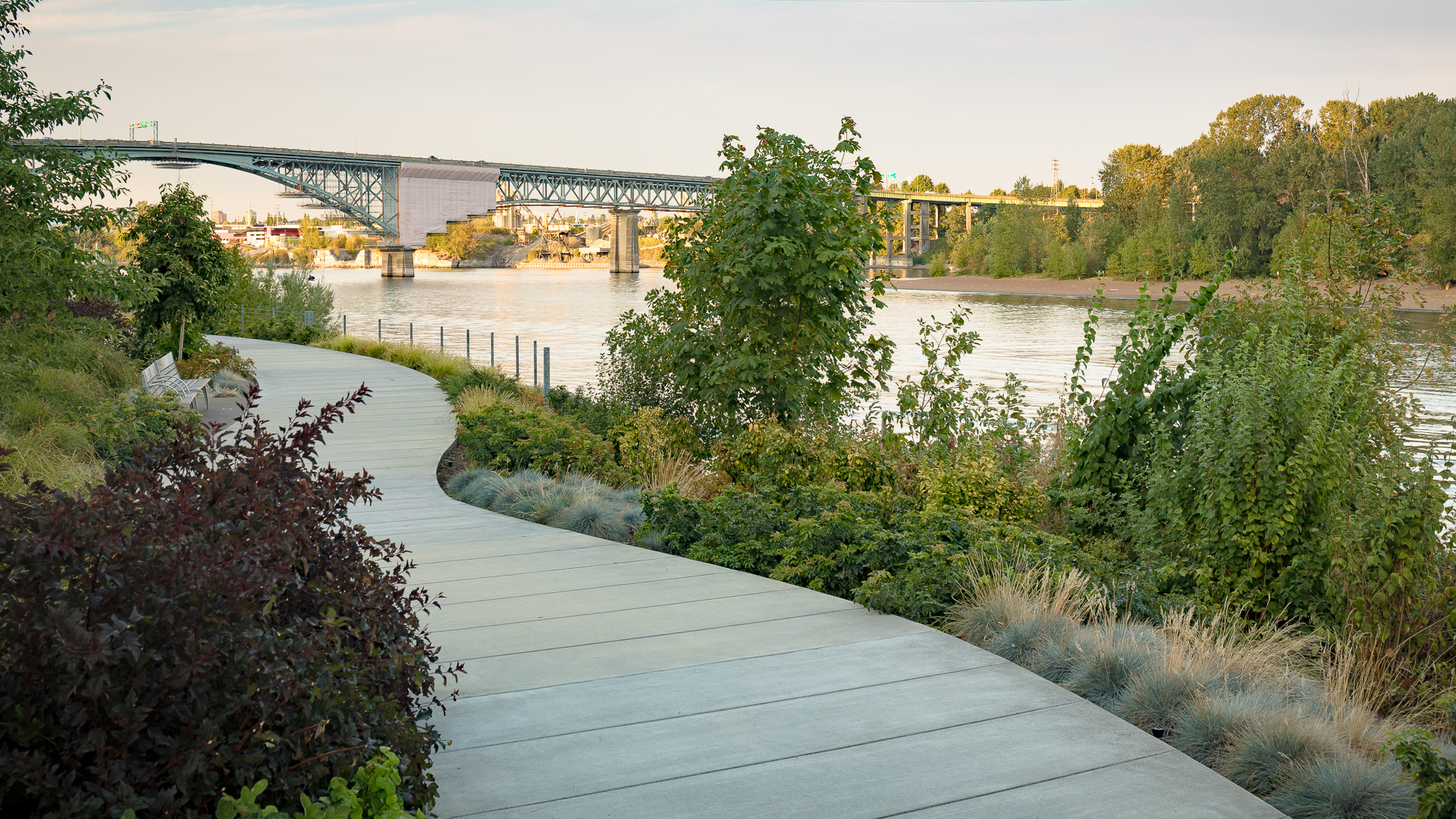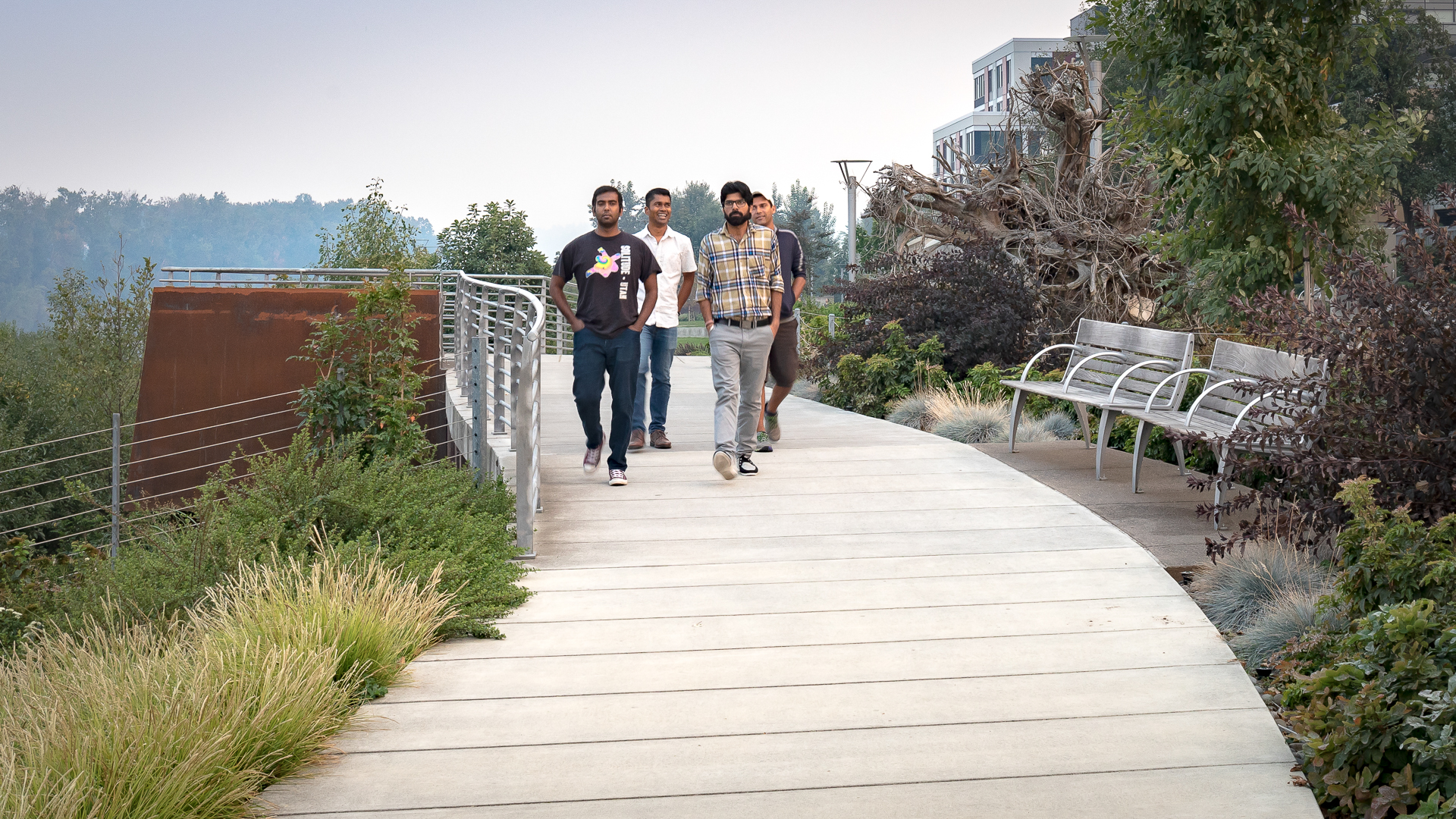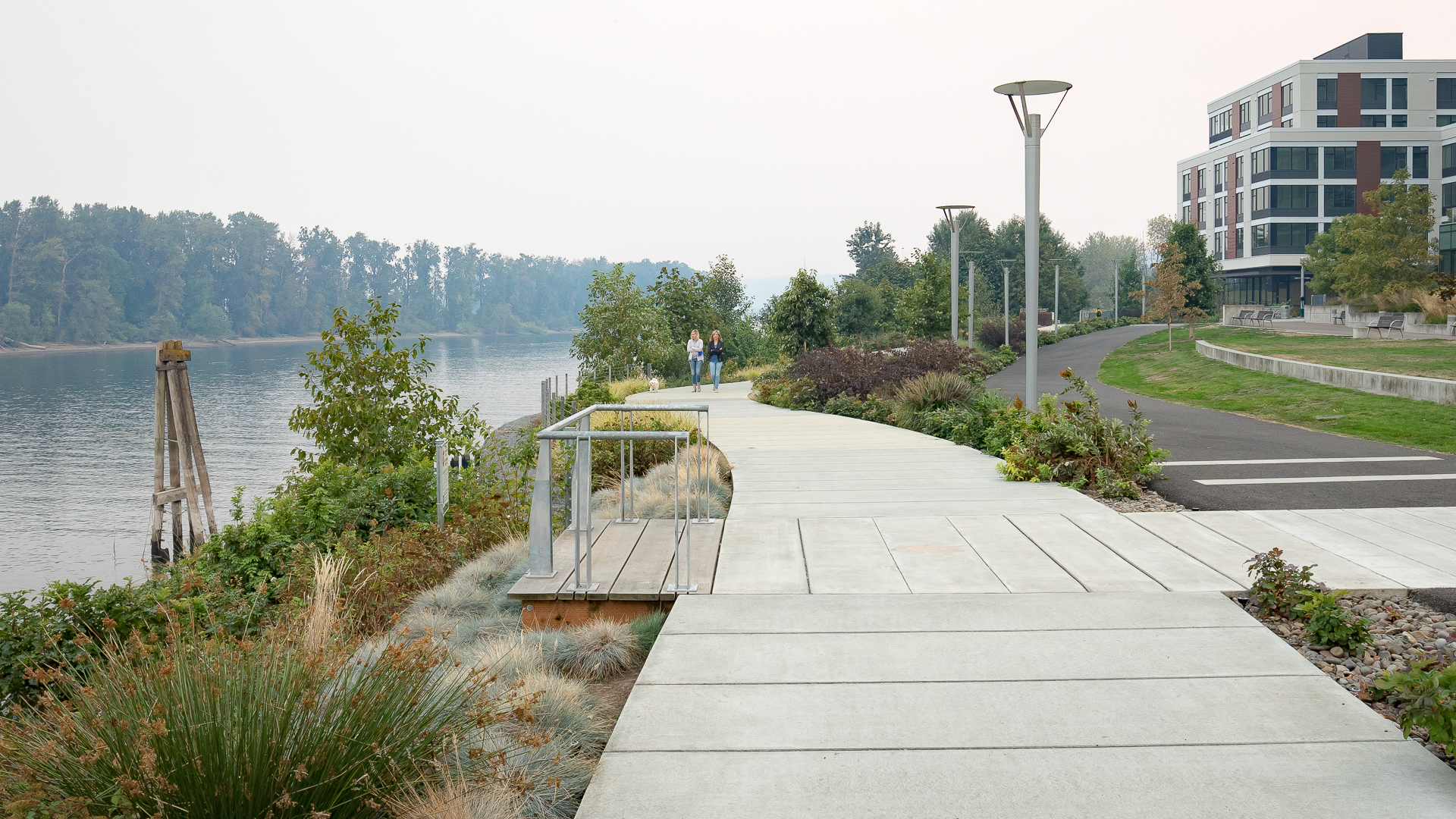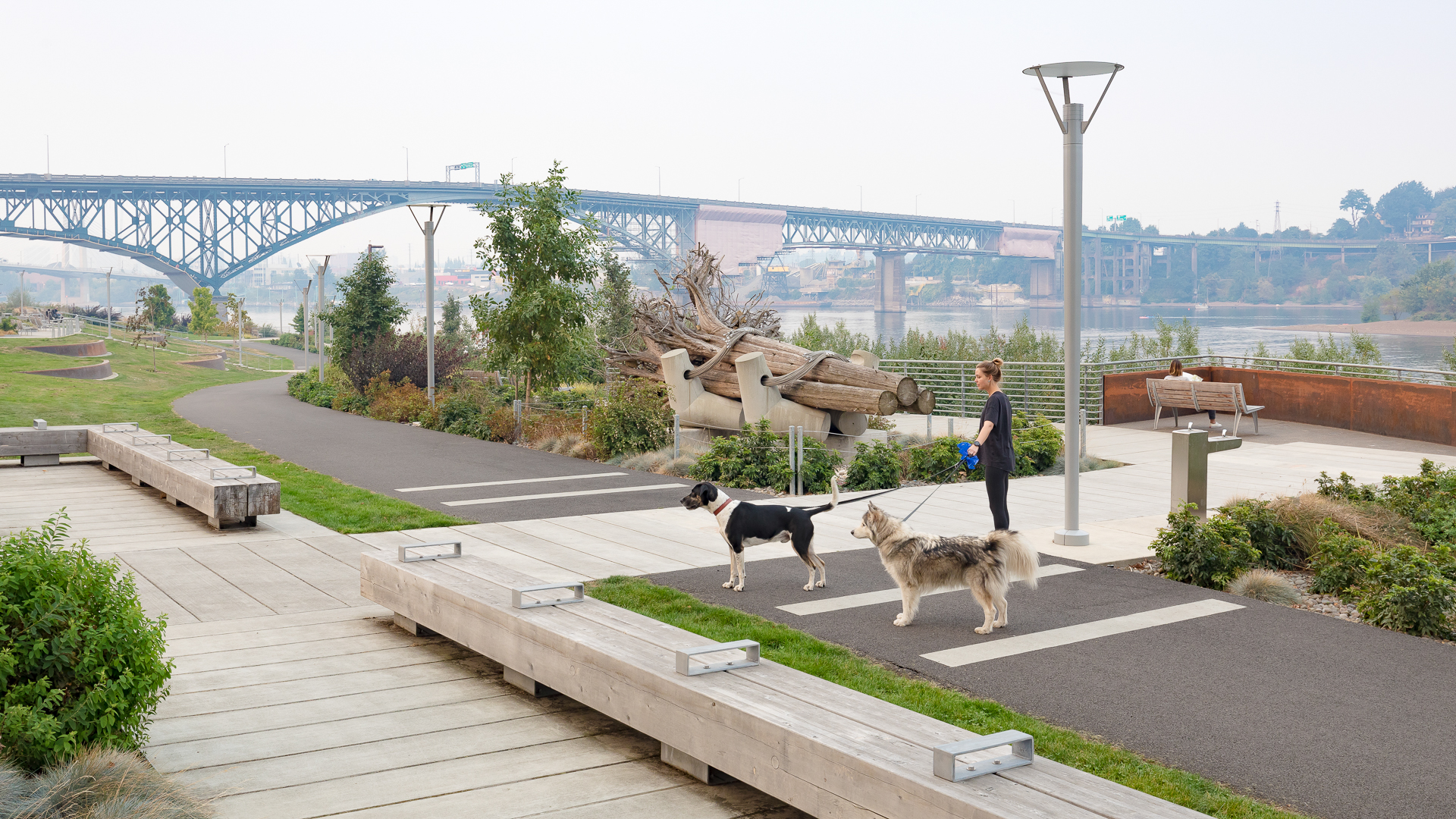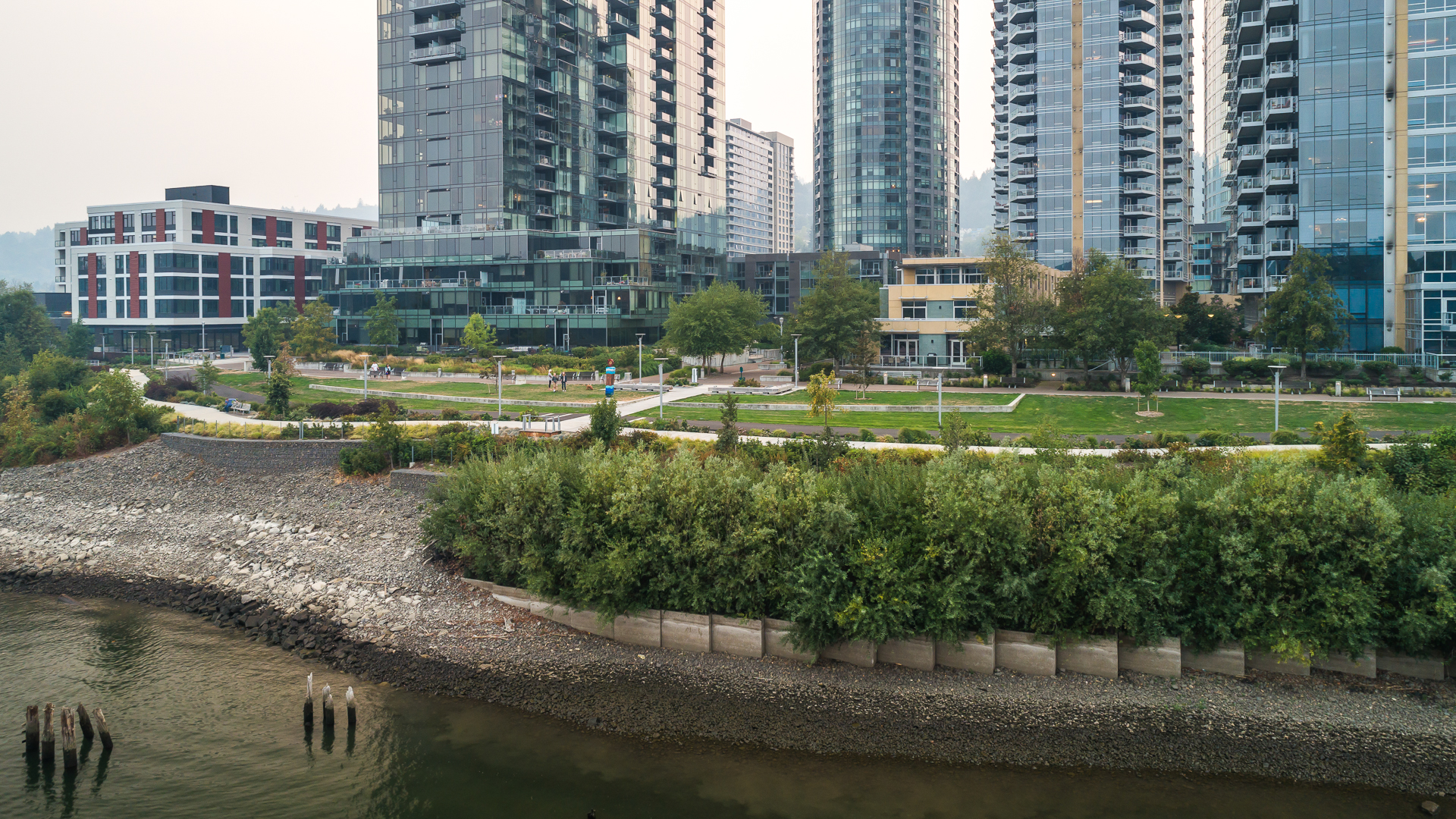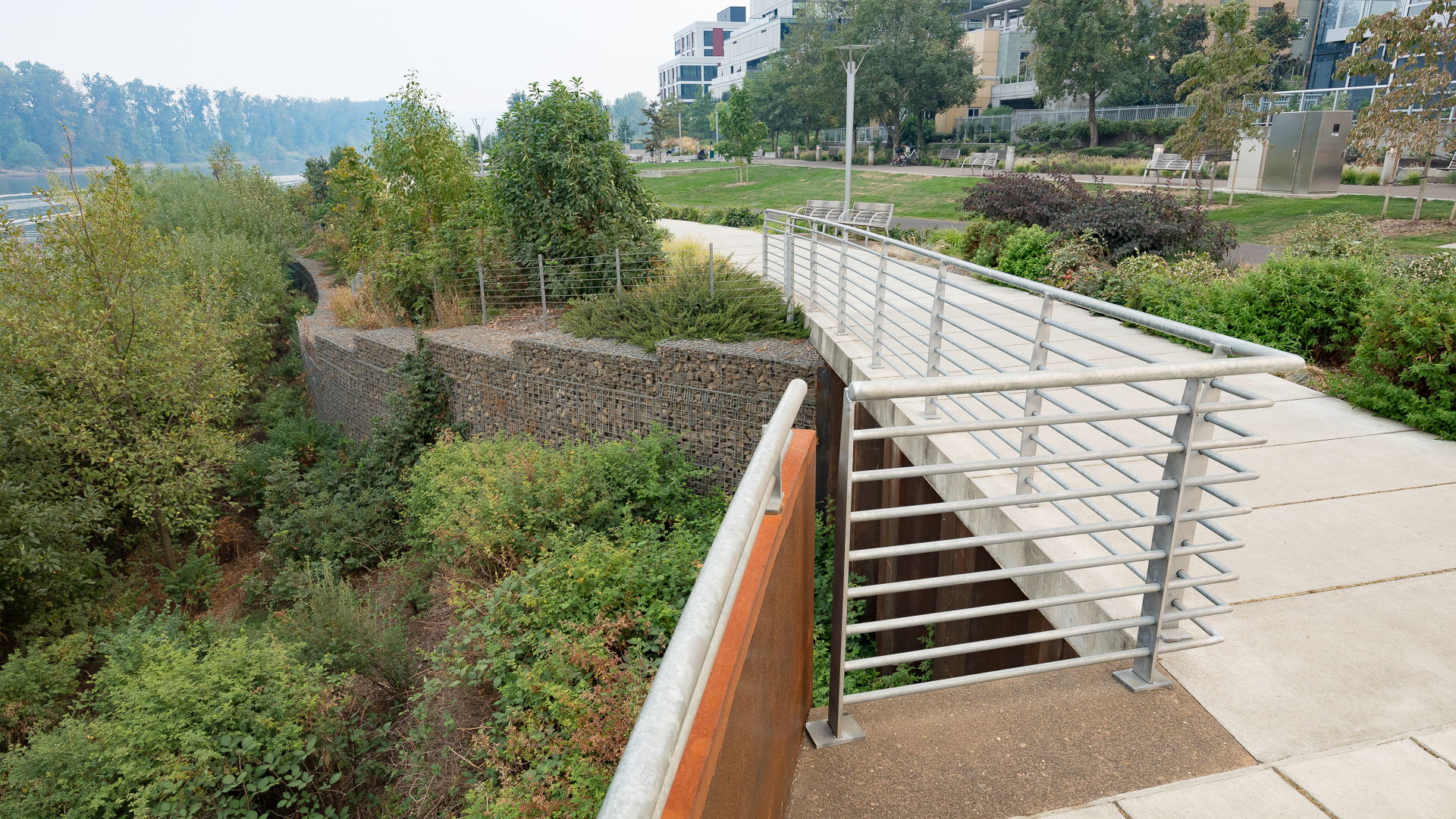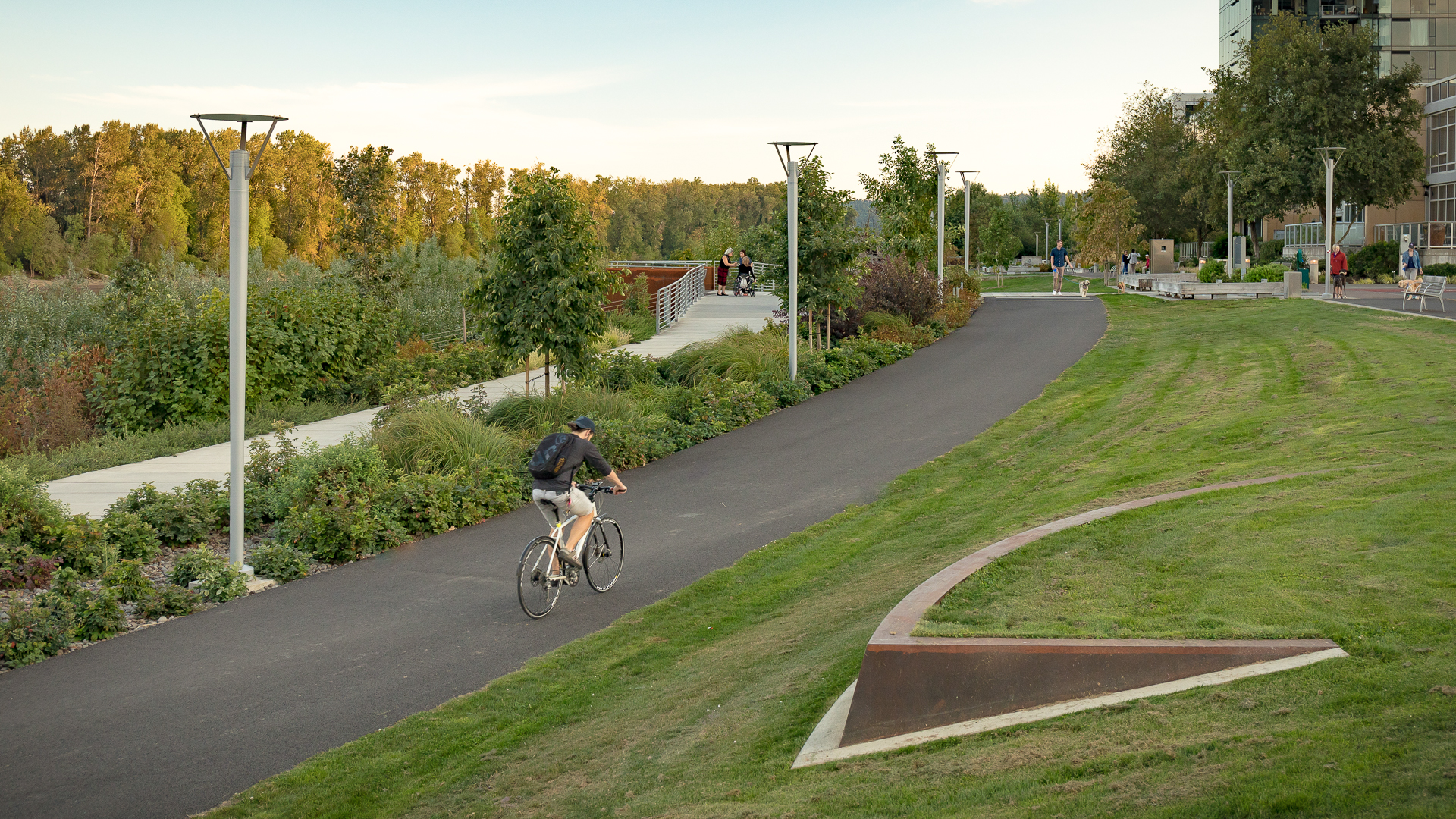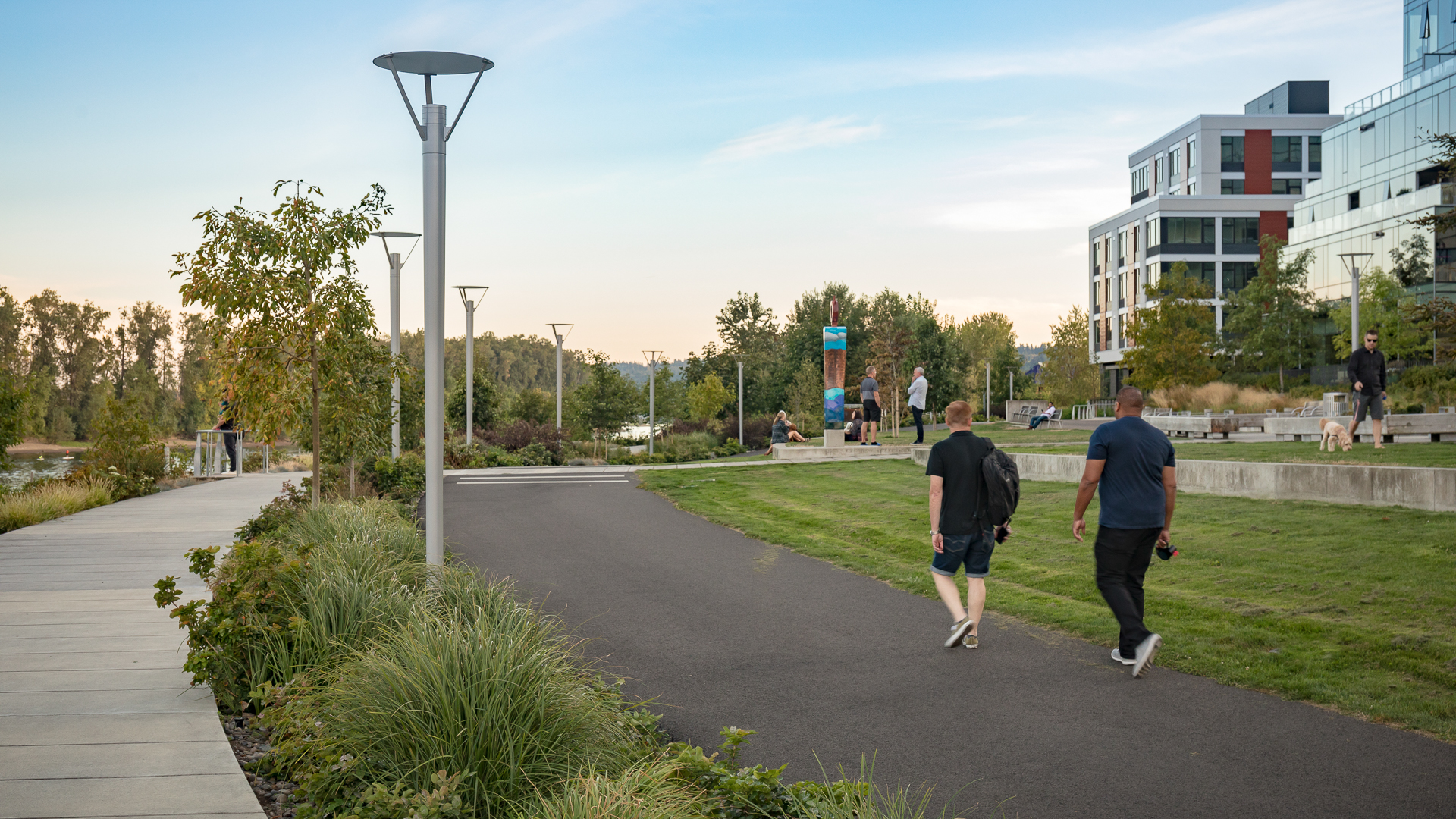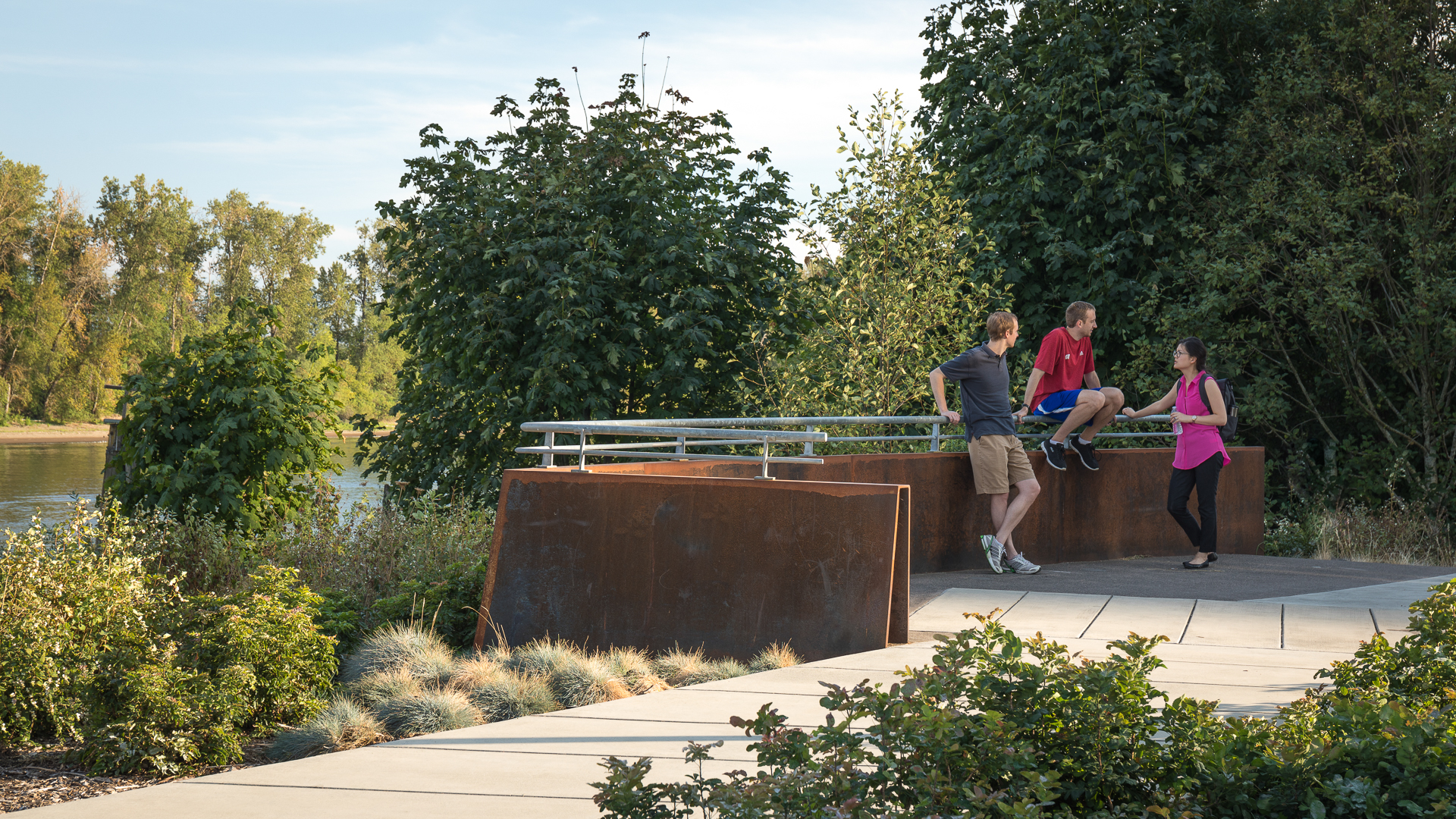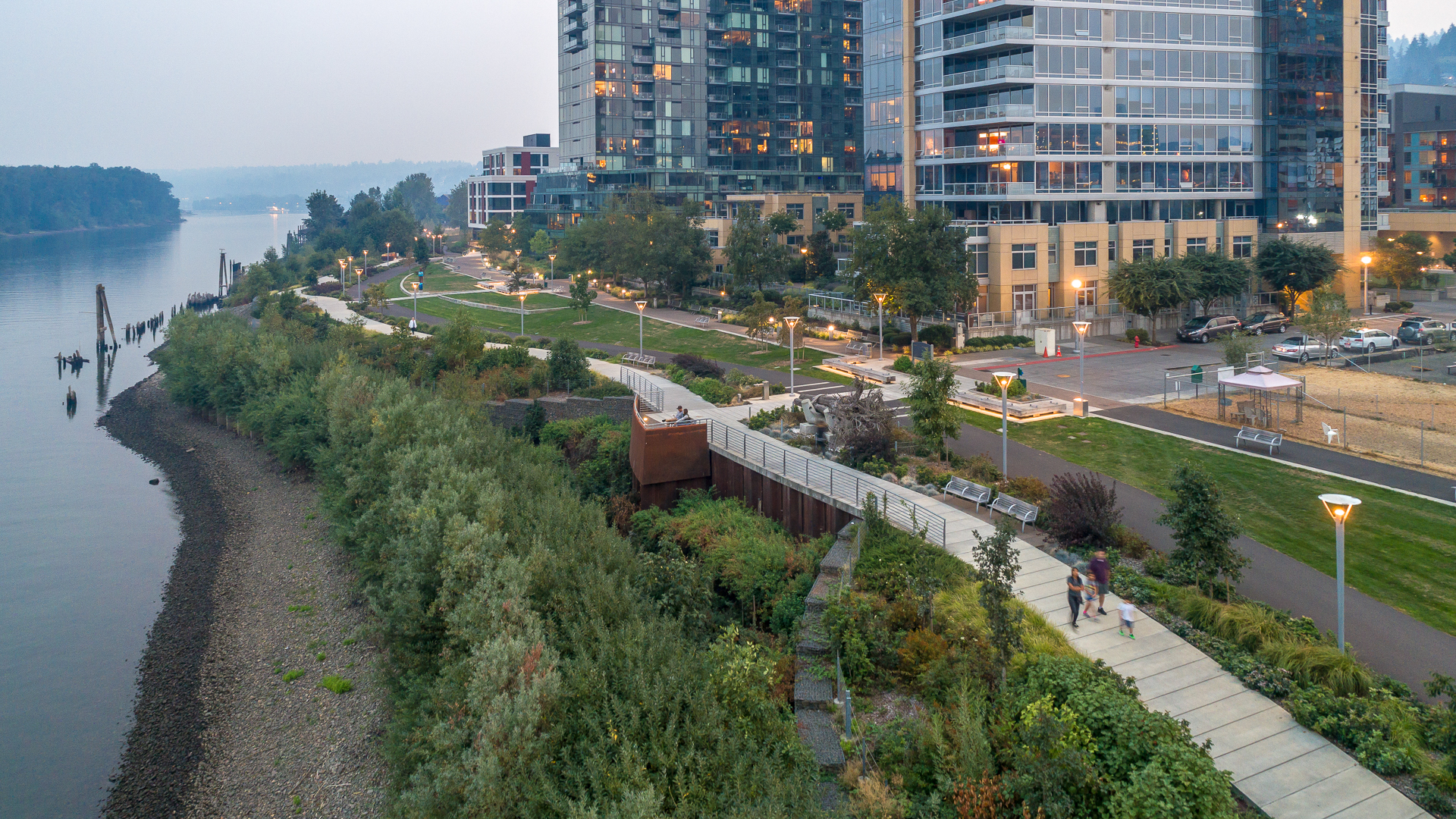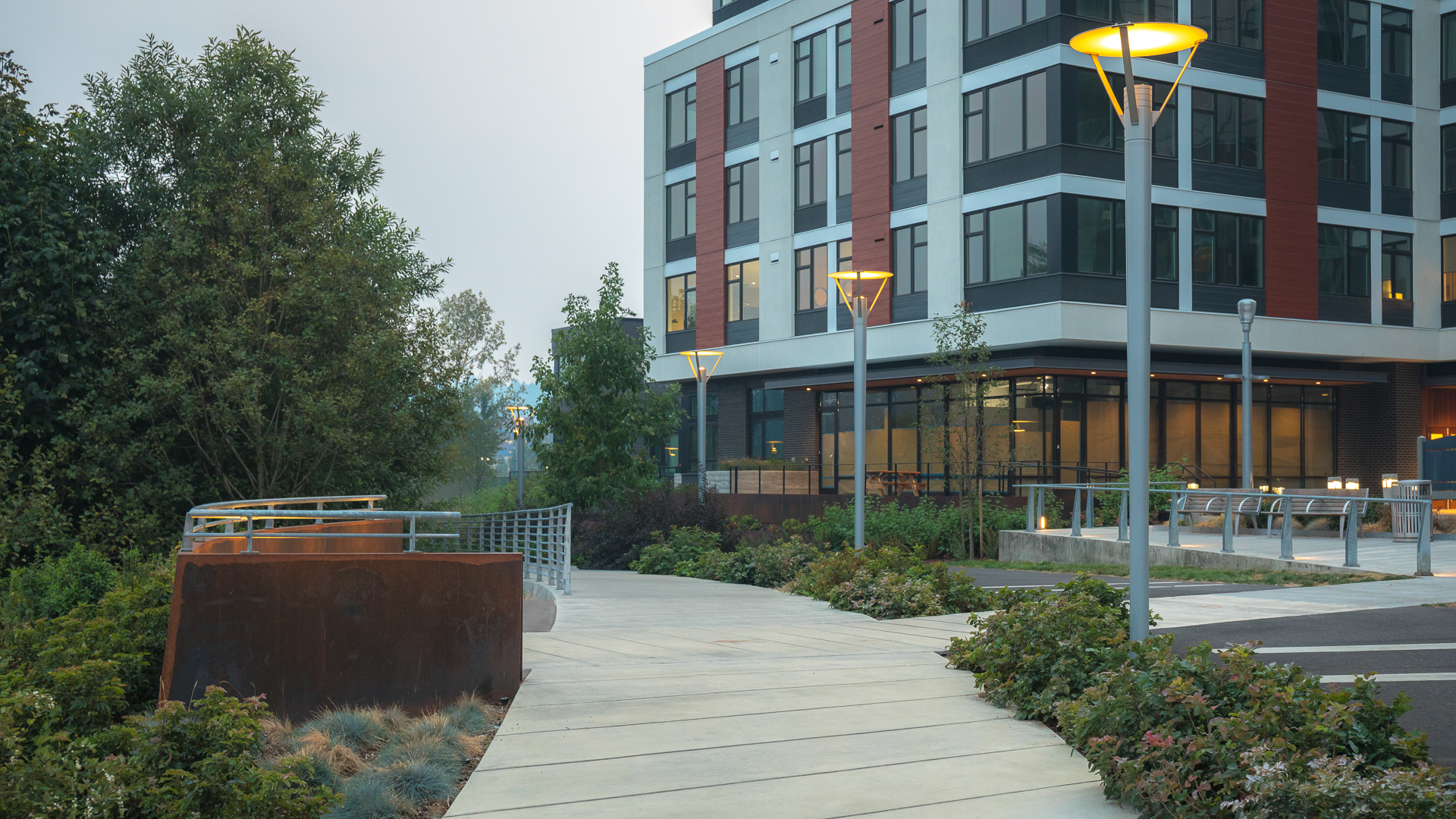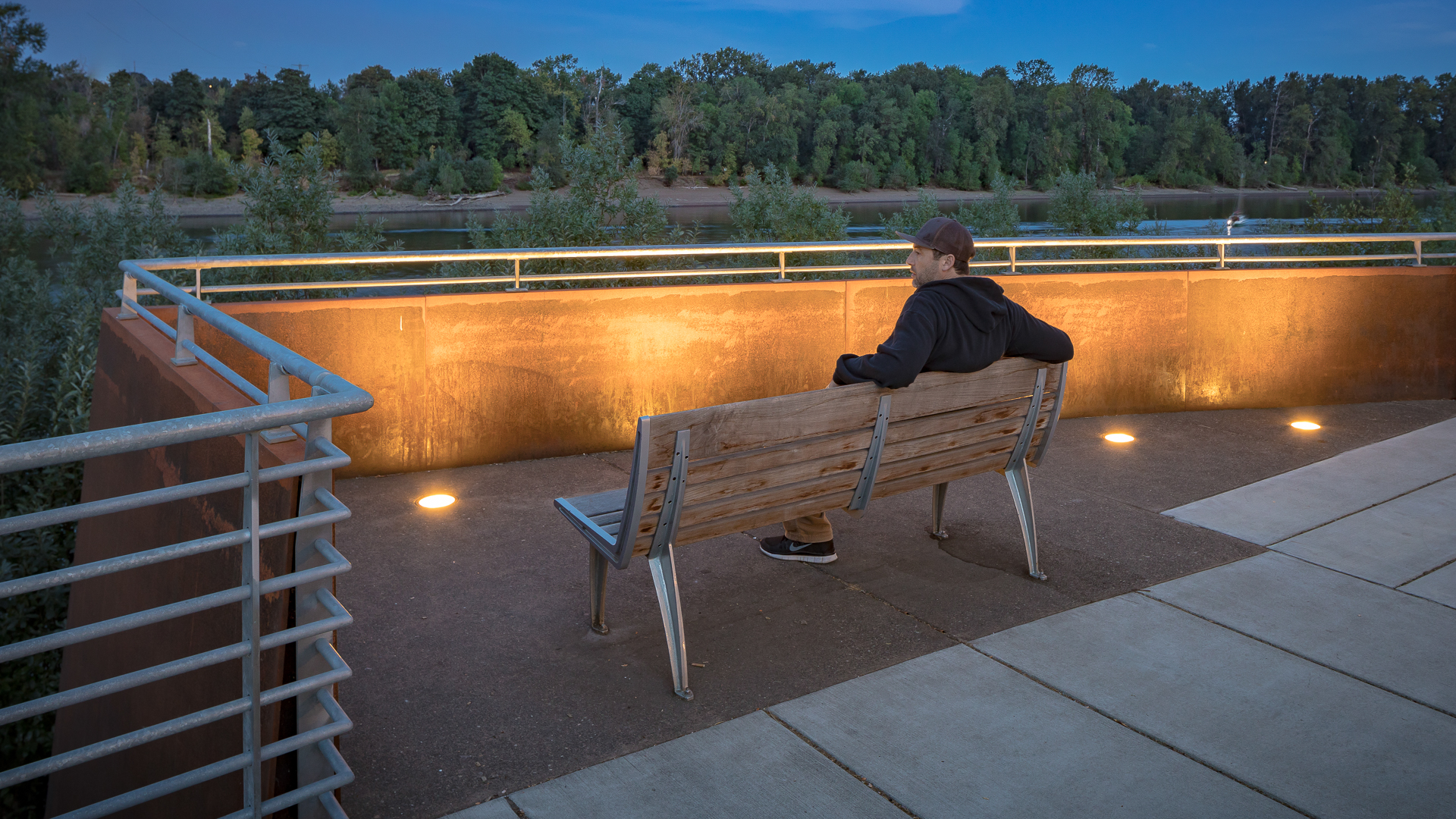DETAILS
The new urban plan for South Waterfront includes a 1-1/2 mile extension of downtown’s waterfront parks and the reclamation of the Willamette River for public recreation. The design team worked closely with the City of Portland, developers, and natural resource advocates to strike a balance between development, recreation and re-naturalization of this neglected post-industrial waterfront. Extensive public outreach and charrettes with the community and other stakeholders required reconciling disparate and conflicting goals about the extent of development, re-naturalization and public access to the river.
The schematic design achieved broad consensus and, together with design guidelines, is a comprehensive guide to the incremental mixed-use and park development that will follow. The park is first and foremost dedicated to the restoration of a post-industrial waterfront as a naturalized river edge and riparian habitat. The dense mixed-use development planned along its edge, as well as pedestrian and bike trails, placed the need for access at odds with the habitat goals. Working closely with environmental advocates, the design team devised a rational plan for the park, which strategically places access and activity in “moments” and nodes without compromising the newly-formed habitats. These spaces range from dramatic cantilevered pier overlooks, boat launches and active civic plazas to quiet, sloping lawns meadows and terraces. These spaces, along with the shoreline trail and bikeway, are all intended to serve the park’s diverse constituency and are connected to the city’s riverwalk, bikeway, tramway and light rail systems.
The design celebrates a rich, Native American and industrial logging and ship building heritage with a landscape narrative of cranes, ship’s bows, terraces, log overlooks and bargeways; all expressed in the 21st century design language of our current culture. While South Waterfront Park is unique to Portland’s cultural and historical heritage, it is a model for new urban waterfront parks across the country that must now meet a combination of environmental, cultural and growth goals on common ground.
Gubei Gold Street
SWA was selected to conceptualize, design, and realize a rare find in bustling Shanghai—a pedestrian mall (Gold Street). The corridor occupies three city blocks, is flanked by 20-story high-rise residential towers with retail at street level and book-ended by SWA-designed parks. Creating an iconic presence and enlivening the area, the mall features plazas, fou...
Gantry Plaza State Park
Once a working waterfront teeming with barges, tugboats, and rail cars, the Hunter’s Point shoreline of Queens slowly succumbed to the realities of the post-Industrial Age. As the last rail barge headed into the sunset, this spectacular site was left to deteriorate to a point of community shame. As part of the Queens West Parks Master Plan, Thomas Balsley Asso...
Next C
Next C Water City is a new, fully self-contained sustainable city planned for 500,000 residents. Water was central to the Next C planning concept, supplied by two adjacent rivers and monsoon rains. The city is a system of wetlands, rivers, lakes, and canals, cleansing the water from up-river communities and managing floods during the monsoon season. Working wi...
Larchmont Yacht Club
Larchmont Yacht Club is the second-oldest yacht club in the United States. Conceived in 1880 on the cleft rocks of Larchmont Manor, the club has grown to a membership in excess of 600, with a continued mission to instill and enhance an interest in yachting and the spirit of sportsmanship in members and their families. Set within a mature forest of deciduous tr...

